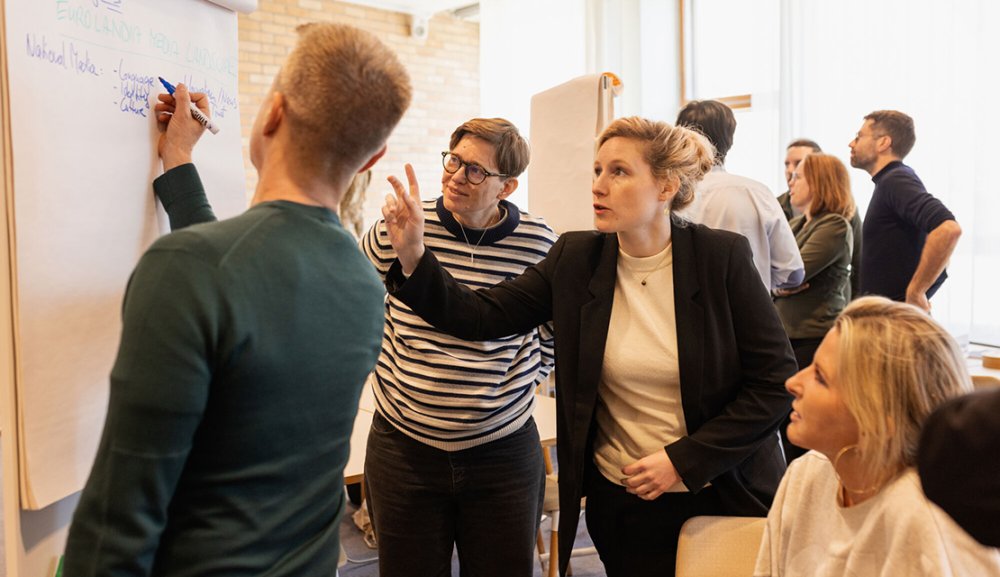Careful Nudging Becomes a Global Phenomenon – a Method That Works Especially Well in Public Administration
Nudging is being used to great effect in the public administration sector throughout the Anglo-Saxon world in particular. Based on behavioral sciences, the method has been used to bring about significant changes and savings for example in the UK. At its core is a thorough understanding of human behavior and the obstacles to particular actions.
Tiia Lappalainen, 26.09.2019
|Articles
The concept of nudging began to gain traction in public administration circles in particular following the 2008 publication of the book Nudge: Improving Decisions about Health, Wealth and Happiness, by winner of the Nobel Prize in Economic Sciences Richard Thaler and law professor Cass Sunstein.
In 2010, the Behavioural Insights Team (BIT) was established in the UK as a government unit specialized in nudging, and in 2015 a brand new nudge team to be established as part of Angela Merkel’s administration was the topic of much discussion in German media. Nudging was also actively used in Barack Obama’s administration.
In practice, nudging refers to shaping the environment and choice architecture to guide people into making choices that are beneficial for them, for example in relation to health. Strict definitions of the concept state that financial incentives or restrictions on people’s freedom of choice may not be used in nudging.
We are constantly being subjected to efforts to influence our choices; we do not live in a neutral world."
However, in the view of Principal Advisor with the UK-based BIT and Social Psychologist Tiina Likki, the issue of restricting freedom of choice is a tricky one.
“I feel it’s a bit of a moot point, given we are constantly being subjected to efforts to influence our choices; we do not live in a neutral world. Employers, market forces and architecture all have a constant impact on our choices and decision making, and we could also nudge people unintentionally,” explains Likki.
Instead of nudging, Likki would rather talk about a broader application of behavioral sciences.
“I am more interested in gaining a broader understanding of what influences human behavior. Sometimes these influences can also involve restricting freedom of choice or financial frameworks.”
Likki regards Finnish alcohol culture as one pertinent example. The positioning of alcoholic products in stores will not necessarily make people drink less by itself, instead it needs to be accompanied by a restriction of freedom of choice for the common good. Another good example is the ban on smoking indoors. The same result could hardly have been achieved simply by influencing attitudes.
Success with nudging starts with identifying obstacles
To help decision-makers, the BIT has condensed nudging down to four cornerstones: Easy, Attractive, Social and Timely in the development of the accordingly named EAST framework.
It all sounds pretty straightforward and logical, but designing and implementing nudging measures requires a great deal of work, not to mention a thorough understanding of human behavior and factors influencing decision making. This entails footwork, testing and research data.
“There’s no point reading dozens of books on nudging if you don’t understand the context in which humans operate,” explains Likki.
In the UK, the BIT has implemented a number of different nudging measures, which have encouraged people to pay their taxes and fines, register to vote, and manage recruitment in a more equal manner, to give just a few examples.
There’s no point reading dozens of books on nudging if you don’t understand the context in which humans operate."
Likki is currently working on a project aiming at helping unemployed people to find work.
“They want to return to work, but there are obstacles: one person might have put their back out, whilst another might have suffered a burn out. First, you have to establish what the obstacles to employment are. To really get results you have to put in the legwork and find out what kind of employment services are available, what kind of support is on offer, and why supply and demand are not balanced,” says Likki.
One prerequisite for successful nudging is an understanding of the deterrents that are preventing people from doing what you want them to be doing.
Likki highlights workplace exercise as an example. Plenty of people would like to exercise more, but just aren’t managing to.
“Is it because they don’t have time? Or perhaps because they follow by example and the boss doesn’t take breaks and get moving? Or maybe it’s because there are no showers available? These obstacles can be very practical in nature. The first requirement for success in nudging is having a real understanding of the choice situation,” says Likki.
The overconfidence bias lurking around the corner
Nudging requires an understanding of the human behavior models, irrationality, and delusions that steer our everyday choices.
We don’t necessarily do what’s good for us, even if we’re fully aware of the facts of the matter. We’re also inclined to take a more rose-tinted view of our own actions than an objective observer might.
“The classic example of this is a survey carried out in the US, in which 80 percent of people assessed themselves as being better-than-average drivers. Clearly, some of these assessments were inaccurate,” states Likki.
We don’t necessarily do what’s good for us, even if we’re fully aware of the facts of the matter."
According to Likki, the overconfidence bias is the greatest delusion amongst those planning social policy measures. Government officials have no trouble seeing new measures as great innovations and believe that citizens will be able to see the positives just as easily.
“But citizens might not necessarily have the same interest or level of knowledge as the government officials,” Likki points out.
In addition to these delusions, the surrounding choice architecture also has a major impact on how we act, influencing how and the direction in which our environment guides us to act.
If we have large plates, we’ll serve ourselves larger portions. If the elevator is the first thing we see in front of us, we’re far less likely to think of taking the stairs.
“Nudging measures should be assessed in the context of the situation. Sometimes, relatively minor things can achieve results, through refining, adapting, rationalizing and clarifying. You don’t always need a lot of money for new measures,” Likki says.
If we have large plates, we’ll serve ourselves larger portions. If the elevator is the first thing we see in front of us, we’re far less likely to think of taking the stairs."
To find the right areas to refine or adapt, measures are tested before being implemented on a broader scale.
Nudging is well-suited to situations where there are obstacles in the background linked to beliefs and human behavior that are getting in the way of people acting as you want them to.
However, Likki is quick to point out that structural problems cannot be resolved with these kinds of measures.
“There’s no point nudging people to expand their job search area to the neighboring municipalities, for example, if there is no good public transportation to the area in question. Likewise, nudging will be no use in directing someone towards healthier choices in food if they lack the means to buy healthy food.”
How to nudge is one part of Aalto PRO's Diploma in Service Design and Service Design programs. Aalto EE's Design Thinking for Business Innovation program is a deep-dive into practical design thinking methodology.






















